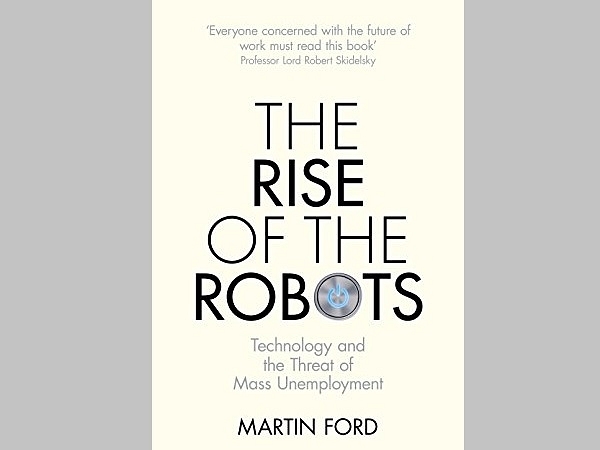Books
Are We Heading Towards Mass Unemployment? Review Of Martin Ford’s ‘The Rise Of The Robots’
- What Martin Ford predicts in his book, The Rise of the Robots, about the state of jobs in the future is far from bright. Are jobs getting away from us?

Image Credit: Amazon
This is possibly the scariest non-fiction book I’ve ever read.
Winner of the FT & McKinsey & Company Business Book of the Year 2015 Award, Martin Ford’s The Rise of the Robots: Technology and the Threat of Mass Unemployment (2015) talks about how businesses are automating jobs in large numbers, causing unemployment in the millions. Let me pause here for a moment and bring to your notice another book that deals with the same theme: the ebook Race Against the Machine (2011), written by professors Erik Brynjolfsson and Andrew McAfee of Massachusetts Institute of Technology.
Brynjolfsson and McAfee narrate the story of the inventor of chess. On inventing chess, the inventor shows his creation to the emperor. The emperor, pleased with the game, asks him to name his reward. The clever inventor asks for one grain of rice for the first square of the chessboard, two grains for the second, four for the third and so on, with each square receiving twice as many grains as the previous square. The emperor underestimates the size of the reward and agrees to it. The constant doubling results in very large numbers and, at the 64th square, the clever inventor stands to receive a pile of rice much bigger than Mount Everest – much more rice than ever existed on the planet.
Brynjolfsson and McAfee make the point that up to the 32nd square, the quantity of rice is not very large; at the 32nd square, the inventor stands to receive about four billion grains of rice, a reasonable number. It is when they proceed to the second half of the chessboard that the compounding yields devastatingly large numbers. Brynjolfsson and McAfee use this chessboard scenario as an analogy to explain what’s happening with technology and jobs today.
The authors tell us that we are seeing a constant doubling in the technology domain. Moore’s law predicts a doubling of computing power every 18 to 24 months. Are we in the second half of the chessboard yet? More than 32 doublings have taken place since the computer was introduced in the 1950s, and Moore’s law still holds valid. This persistent doubling has resulted in some drastic changes to both society and business.
In the United States, in the first decade of the twenty-first century, the net job growth rate has been zero. Zilch. This is not only because of the 2008 crisis, but also because several jobs are getting automated by technology and robots. In spite of this (towards the end of their ebook), Brynjolfsson and McAfee see an optimistic future where people will work harmoniously in tandem with robots, and the world will continue to hum along.
In The Rise of the Robots: Technology and the Threat of Mass Unemployment, Ford takes a more pessimistic view. Ford writes:
In the beginning of the Industrial Age, there were many cotton workers who lost their jobs due to automation of cotton spinning. But other sectors flourished, and many cotton workers secured employment elsewhere. Now, we are seeing automation in virtually every sector and it raises the spectre of mass unemployment across sectors. The world, according to Ford, may be controlled by an elite minority who own automated industries – and inequality will be high and widespread.
Ford is an expert at tackling the technology part – he covers things like nanotechnology and 3D printing and deep learning – and he is no less adept at economics. He asks what the government can do when faced with the threat of mass unemployment. We need a paradigm shift in economics, he says. Citing Austrian economist Friedrich Hayek, he recommends the provision of a basic, or guaranteed, income which would help people survive in times of adversity without killing off ambition or aspirations.
What does the future bode for us: the Pollyannaish picture painted by Brynjolfsson and McAfee, or the dismal doom depicted in Ford’s book? This is an important question since the outcome is going to affect us and our children.
Support Swarajya's 50 Ground Reports Project & Sponsor A Story
Every general election Swarajya does a 50 ground reports project.
Aimed only at serious readers and those who appreciate the nuances of political undercurrents, the project provides a sense of India's electoral landscape. As you know, these reports are produced after considerable investment of travel, time and effort on the ground.
This time too we've kicked off the project in style and have covered over 30 constituencies already. If you're someone who appreciates such work and have enjoyed our coverage please consider sponsoring a ground report for just Rs 2999 to Rs 19,999 - it goes a long way in helping us produce more quality reportage.
You can also back this project by becoming a subscriber for as little as Rs 999 - so do click on this links and choose a plan that suits you and back us.
Click below to contribute.
Latest